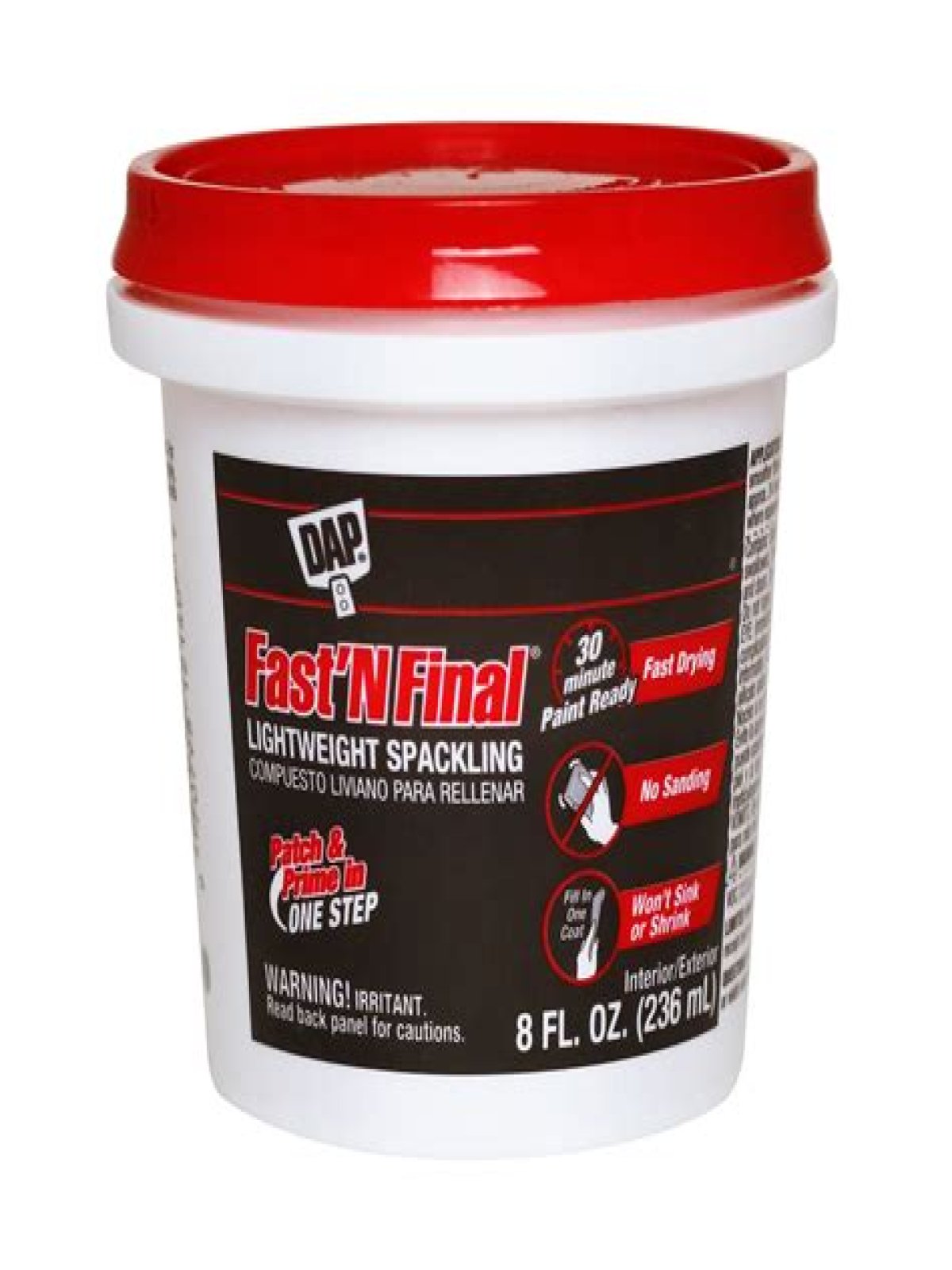Thereof, what is lightweight spackling?
Lightweight Spackling. It spreads easily and allows you to start painting within minutes after it's applied. Won't shrink, crack or sag. Fills dents, cracks, nail holes and other imperfections in interior and exterior surfaces such as drywall, plaster, wood and stucco.
Beside above, what is spackling used for? Spackling paste or spackling compound is made of gypsum powder and binders and is used to patch small holes, cracks and other imperfections like dents in drywall, plaster walls, and sometimes in wood.
Beside above, how do you use a lightweight spackle?
Use a putty knife, slightly wider than the hole, to fill the hole with spackling. Skip sanding by smoothing the finish with a putty knife dipped in water. Lightweight spackling dries hard, but will crumble if bumped, so it is best used for small repairs.
What kind of spackle should I use?
The vinyl spackling compound should be used when a hole or crack is up to ¾” deep. It should be applied in layers and allowed to dry between each one. Along with drywall, vinyl spackling can be applied to plaster, wood, brick, and stone on the interior or exterior of a home.
Is spackling waterproof?
What is the difference between putty and spackle?
Can you sand lightweight spackle?
How long does it take lightweight spackle to dry?
Whats the difference between spackling and joint compound?
Are there different types of spackle?
Which is better spackle or joint compound?
Is spackle as strong as drywall?
Can I use spackle to fill nail holes?
What is the difference between patching plaster and spackle?
Can I use spackle to repair drywall?
What color does spackle dry?
What is the best product to patch drywall?
| Name | Patch Type | Price |
|---|---|---|
| Dap 12345 drydex spackle | Self-adhesive aluminum | Check Price |
| Homax Group 5506 Heavy Duty Self Adhesive Wall Repair Patch | Self-adhesive galvanized steel | Check Price |
| Wall Doctor Drywall Patch Kit | Plastic backing | Check Price |
Can you sand DAP patch and paint?
Do I need to prime over spackle?
How long is spackle good for?
How do you spackle properly?
- Sand down the hole. Rough edges make it difficult to apply Spackle evenly.
- Apply Spackle. Load a small amount of Spackle onto your putty knife and smear it over the hole.
- Smooth the Spackle.
- Apply a second coat.
- Wipe down the surface.
